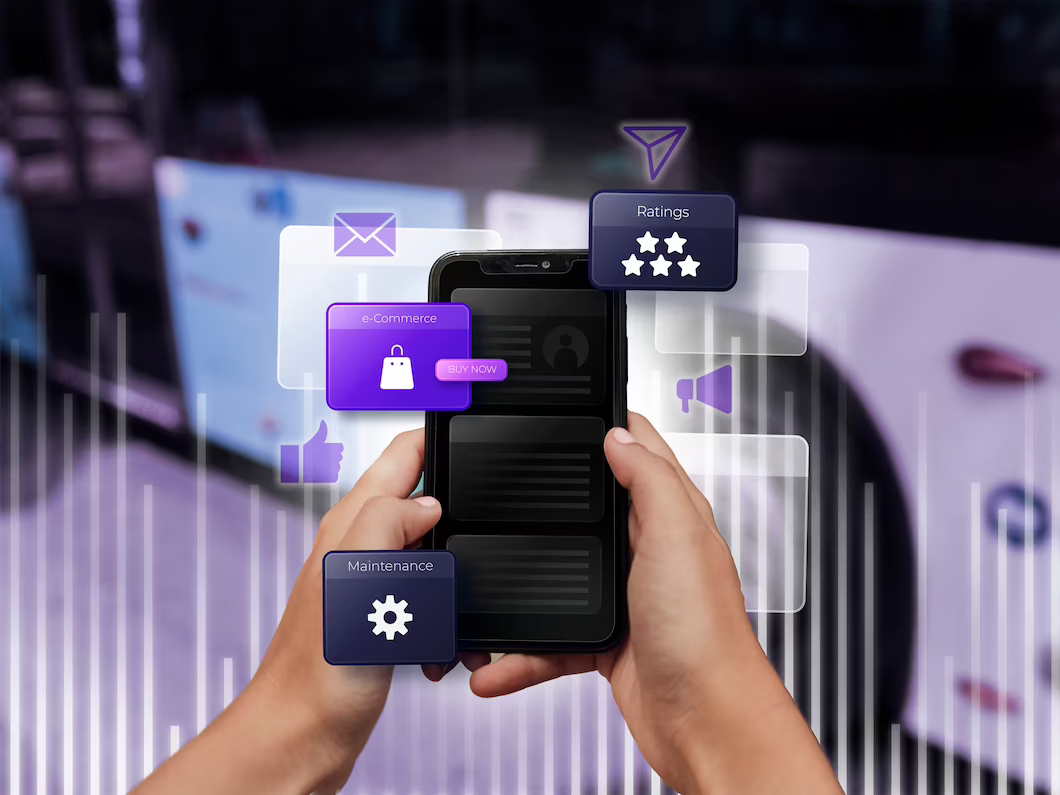Introduction
As businesses endeavor to upgrade their tasks and further develop client encounters, the interest in big business iOS apps keeps on developing. These apps offer many functionalities, including client relationships the board, representative joint effort, and information examination, and that’s only the tip of the iceberg. Be that as it may, building an endeavor iOS app requires cautious thought of elements, for example, improvement approach, security, combination with existing frameworks, client experience, and upkeep.
Understanding Enterprise iOS Apps & Business Needs
Undertaking iOS apps are explicitly intended to meet the extraordinary requirements of organizations. They go past buyer-confronting apps and spotlight on working on interior cycles, expanding efficiency, and empowering consistent correspondence inside an association. This app frequently coordinates with existing endeavor frameworks, data sets, and administrations to give a brought-together and proficient work process.
| Business Needs | Description |
| Increased Revenue | The need to generate more sales and increase profits. |
| Cost Reduction | The need to lower expenses and find ways to operate more efficiently. |
| Market Expansion | The need to enter new markets or expand existing ones to reach a wider customer base. |
| Improved Customer Satisfaction | The need to enhance the customer experience and provide better service. |
| Product Innovation | The need to develop new and improved products or services to stay competitive. |
| Talent Acquisition | The need to attract and retain skilled employees to support business growth. |
| Process Optimization | The need to streamline and improve operational processes for increased efficiency. |
| Risk Mitigation | The need to identify and manage potential risks to protect the business from potential harm. |
| Technology Upgrades | The need to adopt new technologies or upgrade existing systems for improved productivity. |
| Compliance and Regulation | The need to adhere to legal requirements and industry regulations to avoid penalties. |
Choosing the Right Development Approach
When it comes to developing enterprise iOS apps, businesses have several options to choose from. Each approach has its own advantages and considerations based on factors such as time, budget, resources, and target audience.
Let’s explore some of the most common iOS app development approaches.
Native App Development
Native app development involves building apps using platform-specific technologies and tools. For iOS, this means utilizing Apple’s programming language, Swift, and the native iOS SDK (Software Development Kit). Native apps offer the highest level of performance and access to device-specific features.
- Advantages of Native Apps
- Superior performance and responsiveness.
- Access to a wide range of native iOS APIs and frameworks.
- Seamless integration with the iOS ecosystem.
- Enhanced security features.
- Challenges of Native App Development
- Higher development costs and longer time-to-market.
- Requires separate development efforts for other platforms.
- Expertise in platform-specific technologies is necessary.
Cross-Platform App Development
Cross-platform app development allows businesses to build apps that can run on multiple platforms using a single codebase. These apps are developed using frameworks like React Native, Xamarin, or Flutter, which enable code reuse across different platforms.
- Benefits of Cross-Platform Development
- Reduced development time and costs.
- Codebase reusability across multiple platforms.
- Faster time-to-market.
- Simplified maintenance and updates.
- Considerations for Cross-Platform Development
- Performance may not match native apps in some cases.
- Limited access to certain platform-specific features.
- Potential challenges in achieving platform consistency.
Hybrid App Development
Hybrid app development combines elements of both native and web technologies. These apps are essentially web apps running within a native container. They are developed using web technologies such as HTML, CSS, and JavaScript and then wrapped in a native shell using frameworks like Apache Cordova or Ionic.
- Pros and Cons of Hybrid Apps
- Easier development and maintenance compared to native apps.
- A cost-effective approach for targeting multiple platforms.
- Access to device APIs through plugins.
- Offline capabilities through caching.
- Frameworks for Hybrid App Development
- Apache Cordova (formerly PhoneGap)
- Ionic Framework
- React Native (for hybrid development)
Cloud-Based App Development
Cloud-based app development involves leveraging the power of the cloud to build and deploy applications. With this approach, the app’s backend logic and data processing are handled by cloud services, while the front end remains on the user’s device. This approach offers scalability, flexibility, and seamless data synchronization.
- Benefits of Cloud-Based Apps
- Reduced device storage requirements.
- Enhanced scalability and performance.
- Real-time data synchronization across devices.
- Simplified maintenance and updates.
- Factors to Consider in Cloud-Based Development
- Dependence on network connectivity.
- Data security and privacy considerations.
- Integration with cloud services and APIs.
Testing and Quality Assurance
Thorough testing and quality assurance (QA) processes are essential to ensure that enterprise iOS apps meet high standards of performance, functionality, and security. Testing methodologies like unit testing, integration testing, and usability testing should be employed to identify and resolve issues before app deployment.
Conclusion
Building enterprise iOS apps requires careful consideration of development approaches, security, integration, user experience, and maintenance. By leveraging the power of iOS and adopting the right solutions, businesses can create powerful apps that enhance productivity, improve internal processes, and drive customer engagement.

